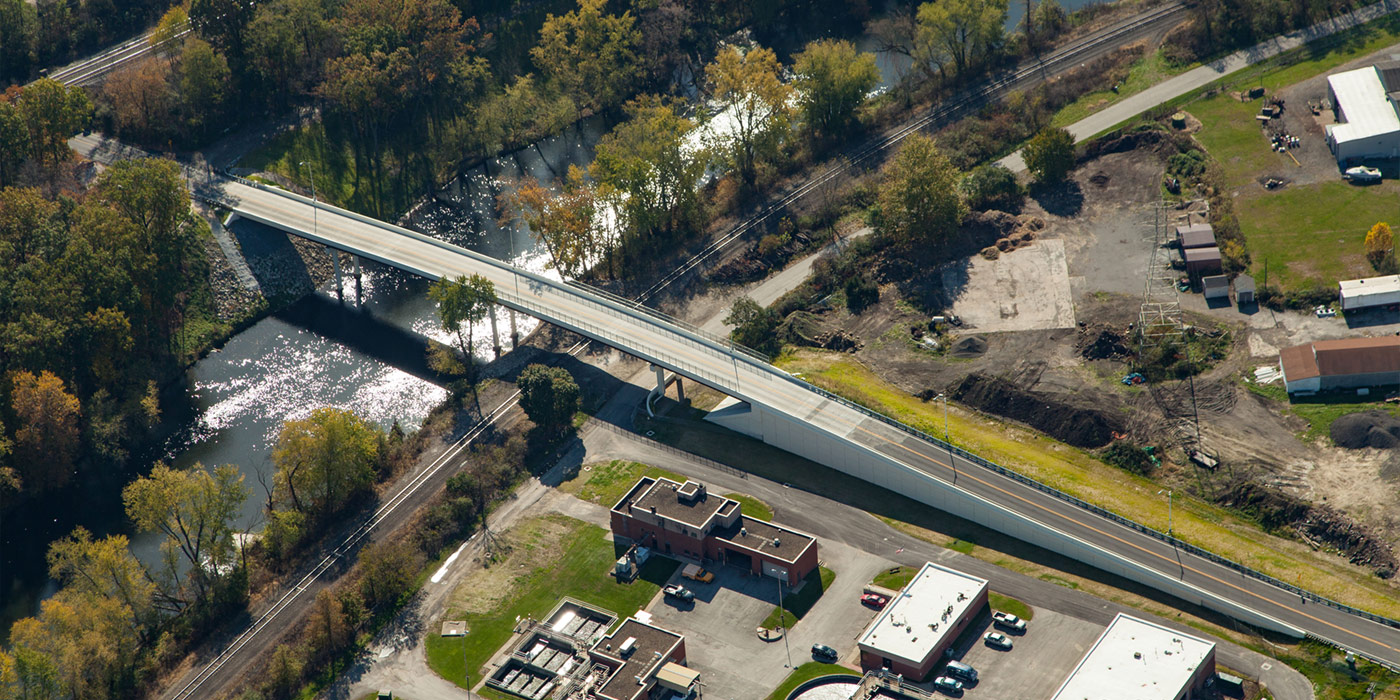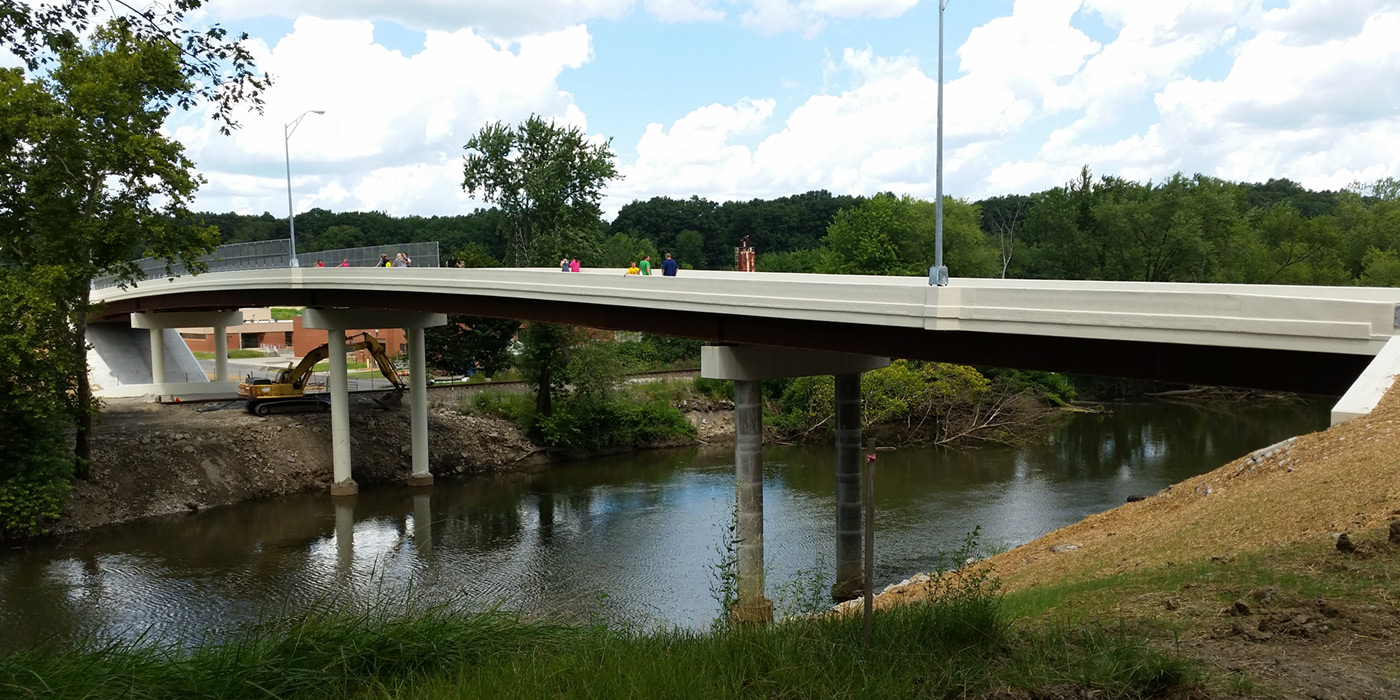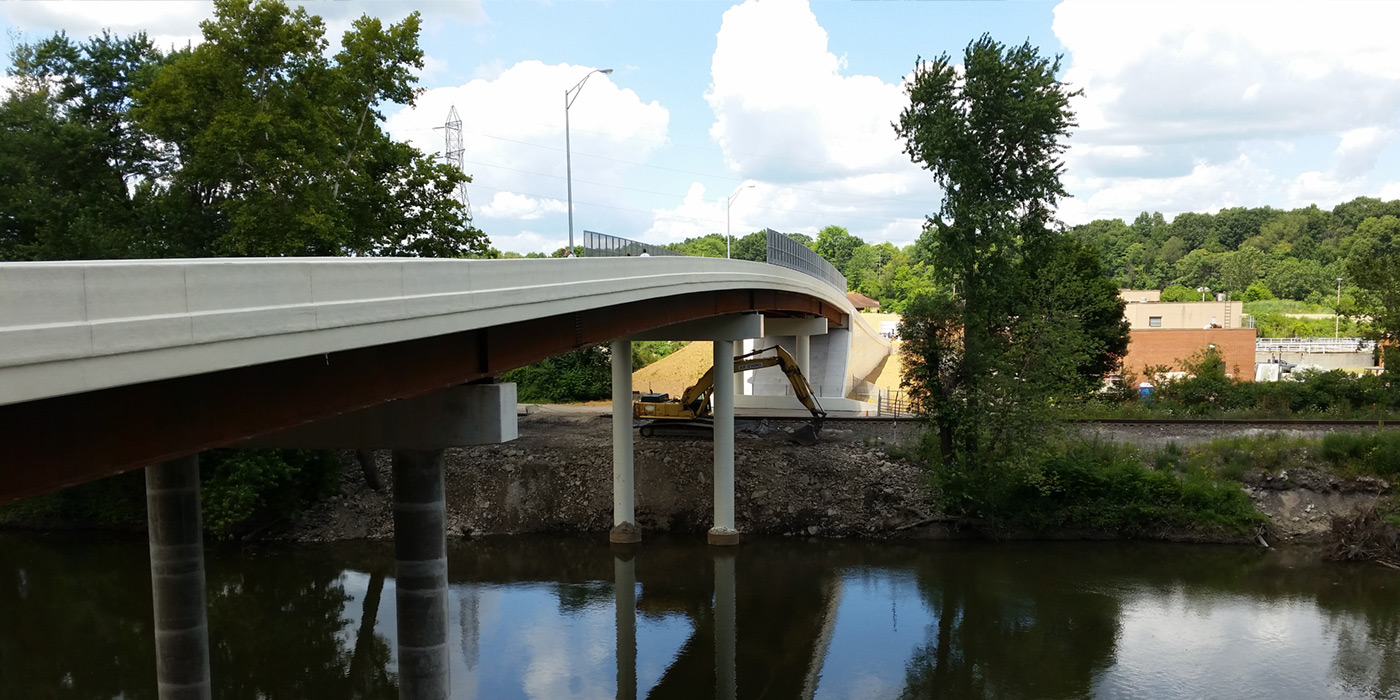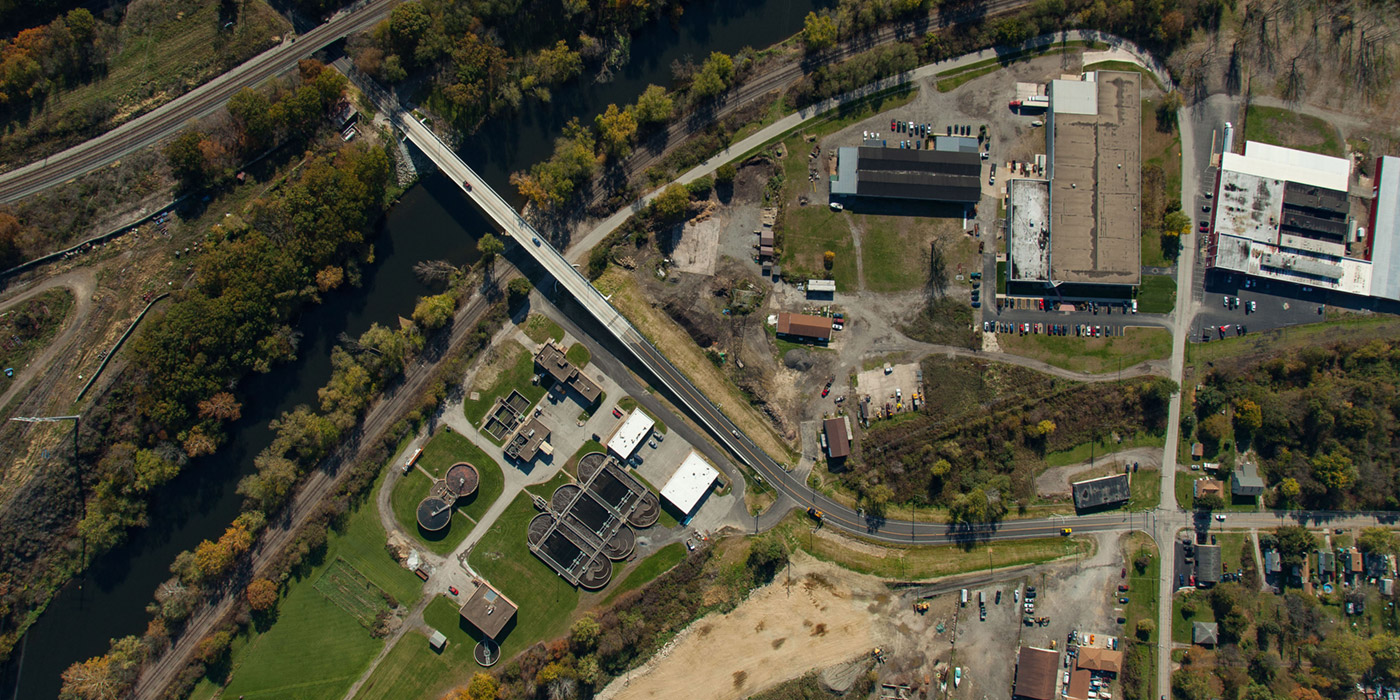Challenge
AFTER BEING CLOSED TO TRAFFIC IN 2009 DUE TO CRITICAL DETERIORATION, A SOLUTION WAS NEEDED TO RESTORE A KEY LINK BETWEEN COMMUNITIES
Services Involved
- Structural Analysis and Bridge Type Study
- Bridge Design
- Roadway Design
- Railroad Coordination
- Utility Relocation Planning and Design
- Traffic Planning and Engineering
- Environmental Planning and Permitting
- Survey and Utility Locating
- Right-of-Way Planning
Awards
2017 Outstanding Highway Project Award, Under $5 Million
American Society of Highway Engineers (ASHE) Cuyahoga Valley Section
Olive Street Bridge Replacement
The Olive Street Bridge (Niles-McDonald Viaduct) was originally constructed in 1920 and underwent major rehabilitation in 1976. Since the 1976 rehabilitation, the 20-span bridge had undergone serious deterioration. The damage was so extensive that the load limit was first reduced to 3 tons in 2008, then closed to all traffic in 2009 after trucks continued to use the structure.
A CRITICAL COMMUNITY LINK
With approximately 3,500 vehicles using the bridge per day, the bridge closure placed a serious hardship on the community. The closure directly impacted first responders, school buses, local delivery and sanitation services.
The loss of this connection was devastating to not only the residents, but also businesses of the Village of McDonald and City of Niles. The replacement of the structure was critically important to the communities’ collective long-term survival.
REHABILITATE OR REPLACE?
The project was initiated with a rehabilitation or replacement study. A structural analysis was performed to determine if the piers of the box beams spans and concrete arches could be salvaged in some way for reuse. The study ultimately concluded that a full replacement with a shorter, four-span structure was the most cost-efficient solution. An additional benefit with the replacement scheme came the opportunity to improve the horizontal and vertical alignments in combination with using an embankment fill to improve the design speed for the facility.
FOCUSING ON PARTNERSHIPS AND COORDINATION
Because of its location and many agencies involved, the project required close coordination from day one to make it a success. The close partnerships led to an on-time completion date though the original construction start was delayed more than five months due to sanitary force main relocation delays by another contractor.
ms kept close partnership between:
- Ohio Department of Transportation (ODOT)
- Trumbull County Engineer’s Office
- Utility companies
- Stakeholders
- A.P. O’Horo
- Norfolk Southern Railroad
- CSX Railroad
- Niles Wastewater Treatment Plant
PROJECT CHALLENGES
In addition to coordinating a number of entities, the project itself also created physical challenges. Some challenges included:
- A 12” sanitary force main carried on the existing structure that could not be out of service. This line was ultimately relocated under the river and railroad under a separate project in advance of the bridge construction,
- An existing 12” high pressure gas line was relocated onto the new bridge,
- AT&T and electric service lines also carried on the existing bridge needed additional attention,
- A number of buried gas and telecommunication lines throughout the site, requiring subsurface utility engineering services for avoidance and/or relocation,
- Environmental commitment notes detailed requirements for work within the Mahoning River and 100-year floodplain due to hazardous/solid waste classification.
- Demolition of entire viaduct structure, including the span over the NS Railroad and arch spans over the Mahoning River. The river portion required an elaborate temporary access fill plan with cost estimating,
- Construction of a 411-foot long mechanically stabilized earth retaining wall while maintaining continuous access to the bordering treatment plant operations.
A NEW, SAFER BRIDGE
The bridge replacement was designed with added safety as an additional focus. Engineers designed a safer, 35-mph gentler horizontal curve, combined with a lower vertical grade line. This enabled construction of direct access drives to service the Niles Wastewater Treatment Plant to the east and to promote industrial development to properties to the west.
The improved safety through the design of the flatter horizontal curve also increased the stopping sight distance over existing conditions.
CELEBRATED BY THE COMMUNITY
Reopening Olive Street via the bridge replacement project was a tremendous benefit to Niles, McDonald, and to Trumbull County. Because a mutual aid agreement exists between Niles and McDonald, fire protection services were restored to their prior levels. Evidence of the enthusiasm of the bridge restoration was in full effect when the Ribbon Cutting Ceremony was held. A parade, complete with fireworks, press coverage, and speeches from an array of local public and state officials were a testimony to the importance of the Olive Street Bridge reopening.
Given the high-profile nature of the bridge project to the local communities, the design and construction teams held the public’s interests in the highest regard so the bridge could be reopened as early as possible.
The Olive Street Bridge replacement project was also featured in the ASHE Scanner Winter 2018 edition.




